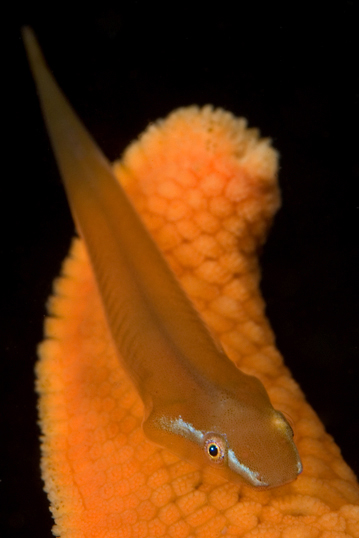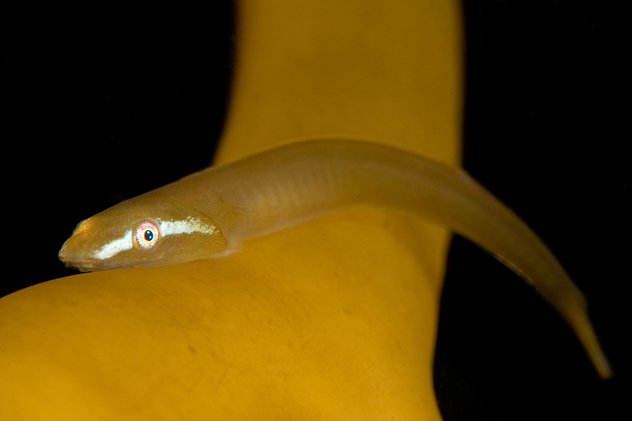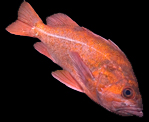
Kelp clingfish, Rimicola muscarum

This kelp clingfish (Rimicola muscarum) has taken on a reddish hue to
blend in with a bat star (Asterina miniata). Perhaps this is an effective
defense against predators. However, their most effective defense against
photographers is to simply hop on to any camera that comes within a few inches
of them. Should a thwarted photographer then be foolish enough to closely
inspect a Rimicola that's decided to perch on his camera, it's likely
that this little fish will then attach itself somewhere on the photographer's
torso. It's remarkably hard to locate one's subject once this has happened. I
usually don't even try.
"Tanker Reef", Monterey Bay, California
November 11, 2006

This kelp clingfish (Rimicola muscarum) is, not surprisingly, clinging to
a stipe of giant kelp (Macrocystis sp.). Clingfish are not uncommon, but
have rather cryptic habits and are therefore often overlooked. I spent the
better part of a 150 minute dive shooting this one 3cm fish -- do I know how to
party or what?. As is often the case, I noticed something in the shots once I
got home that I didn't notice during the dive. In this instance, it was that the
subject was changing it's color to match its background. I considered the
possibility that it was only the reflection of strobe light off the background
that created the appearance of different cameleon colors. However, I've now
dismissed this possibility because the color seems to be uniformly applied to
the entire animal, even to parts not backed by something reflective. I've also
found at least one source in the literature that cites the ability to change
color by another member of the genus Rimicola.
"Tanker Reef", Monterey Bay, California
November 11, 2006





